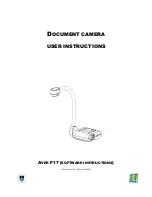
289
Troubleshooting Guide
Horizontal stripes (noise) or irregular exposures can be caused by
fluorescent lighting, LED lighting, or other light sources during
viewfinder or Live View shooting. Also, the exposure or color tone may
not come out right. A slow shutter speed may solve the problem.
During viewfinder shooting or Live View shooting, if you use a TS-E
lens (except the TS-E17mm f/4L or TS-E24mm f/3.5L II) and shift or tilt
the lens or use an Extension Tube, the standard exposure may not be
obtained or the exposure may be irregular.
Depending on the lens type, shutter speed, aperture, subject
conditions, brightness, etc., the continuous shooting speed may
become slower.
Under [
5
3: Custom Functions (C.Fn)
], set [
5: High ISO speed
noise reduct’n
] to [
0: Standard
], [
1: Low
], or [
3: Disable
]. If it is set to
[
2: Strong
], the maximum burst during continuous shooting will greatly
decrease (p.263).
During WB bracketing, the maximum burst for continuous shooting will
decrease (p.136).
If you shoot something that has fine detail such as a field of grass, the
file size will be larger, and the actual maximum burst may be lower
than the number mentioned on page 89.
Horizontal stripes appear, or the exposure
or color tone look strange.
The standard exposure cannot be obtained or the
exposure is irregular.
The continuous shooting speed is slow.
The maximum burst during continuous shooting is lower.
Summary of Contents for EOS 1300D
Page 32: ...32 MEMO ...
Page 56: ...56 MEMO ...
Page 84: ...84 MEMO ...
Page 138: ...138 MEMO ...
Page 206: ...206 MEMO ...
Page 268: ...268 MEMO ...
Page 310: ...310 MEMO ...
Page 311: ...311 MEMO ...
Page 312: ...312 MEMO ...
Page 325: ...325 MEMO ...
















































